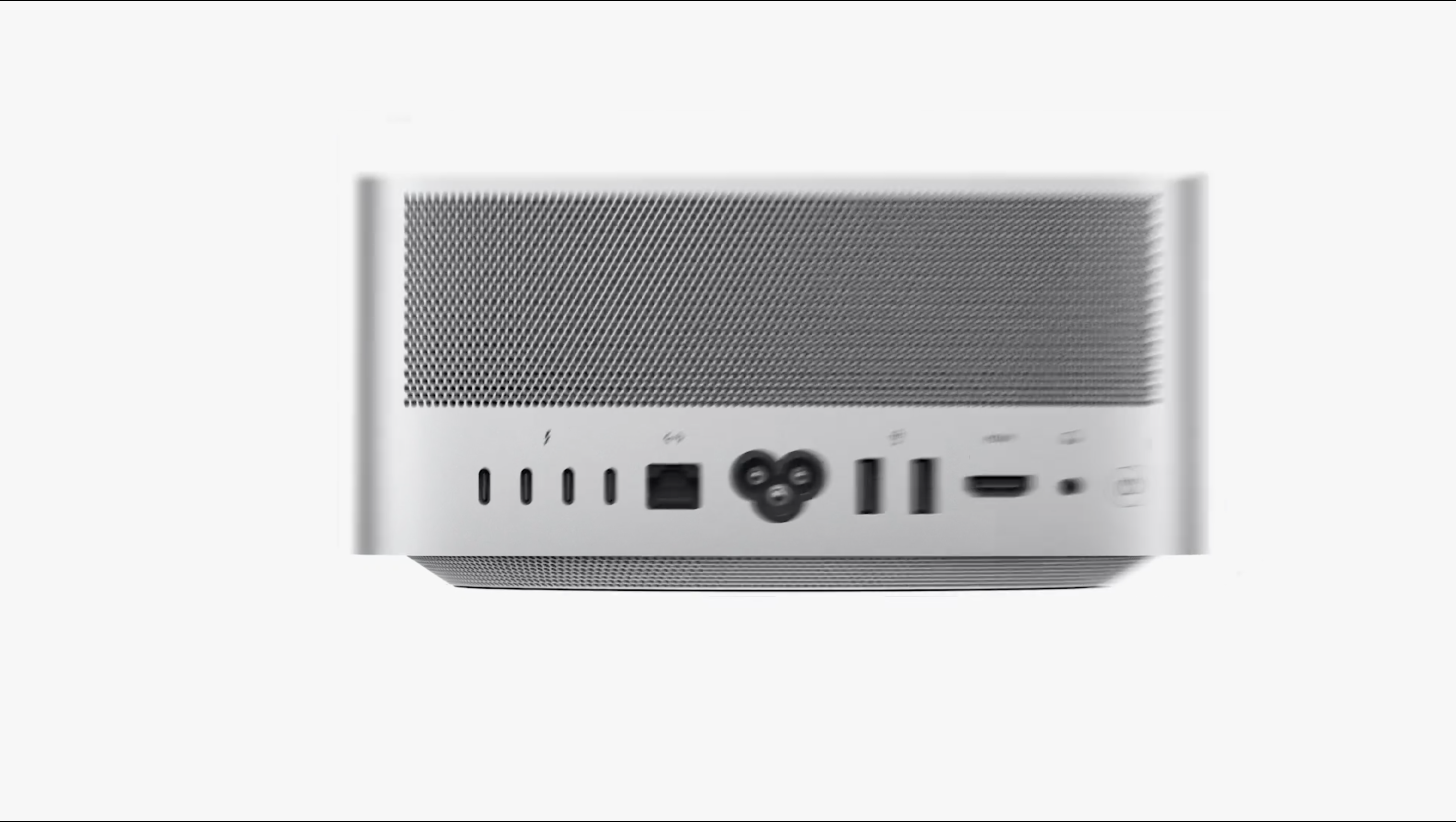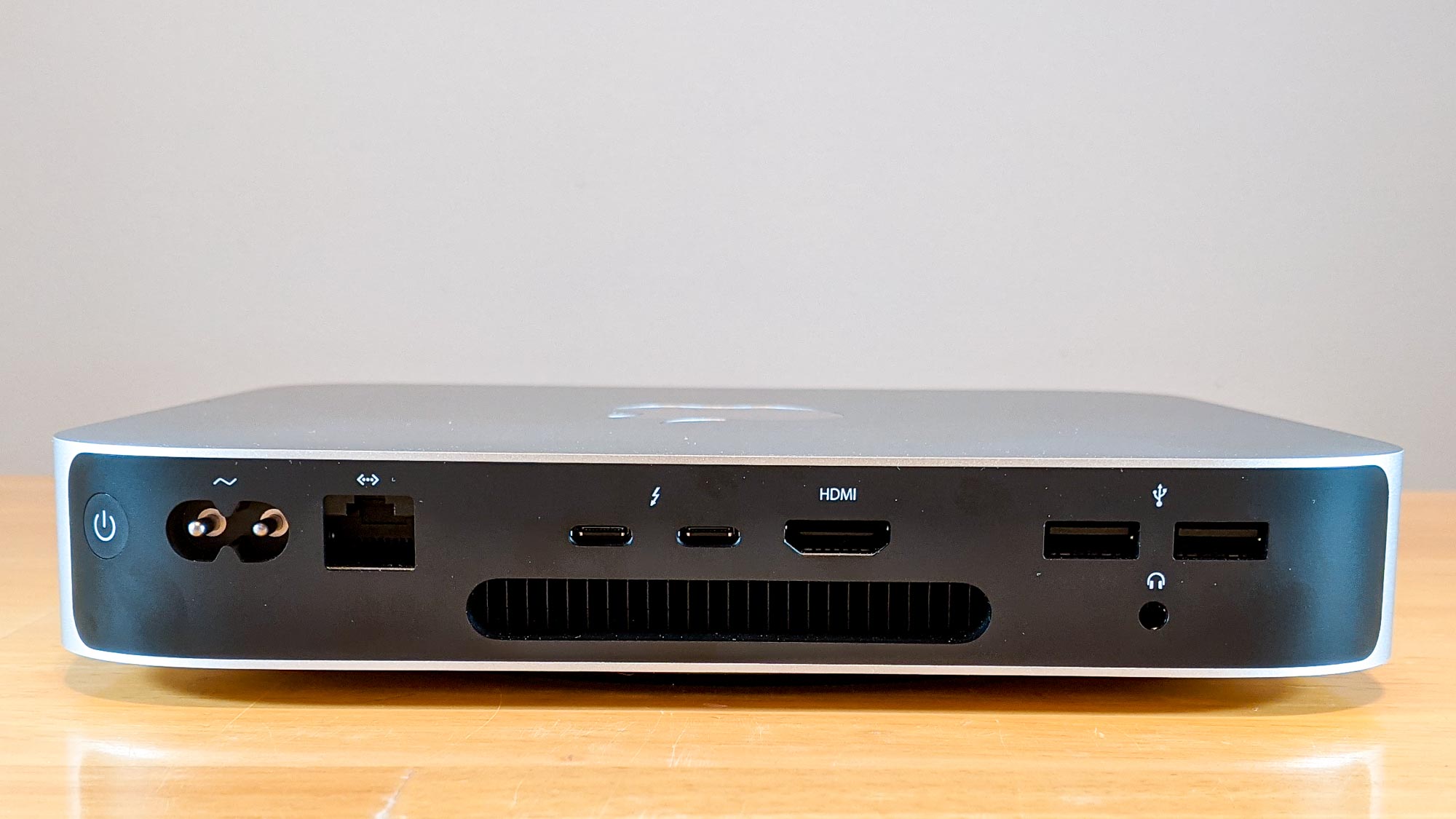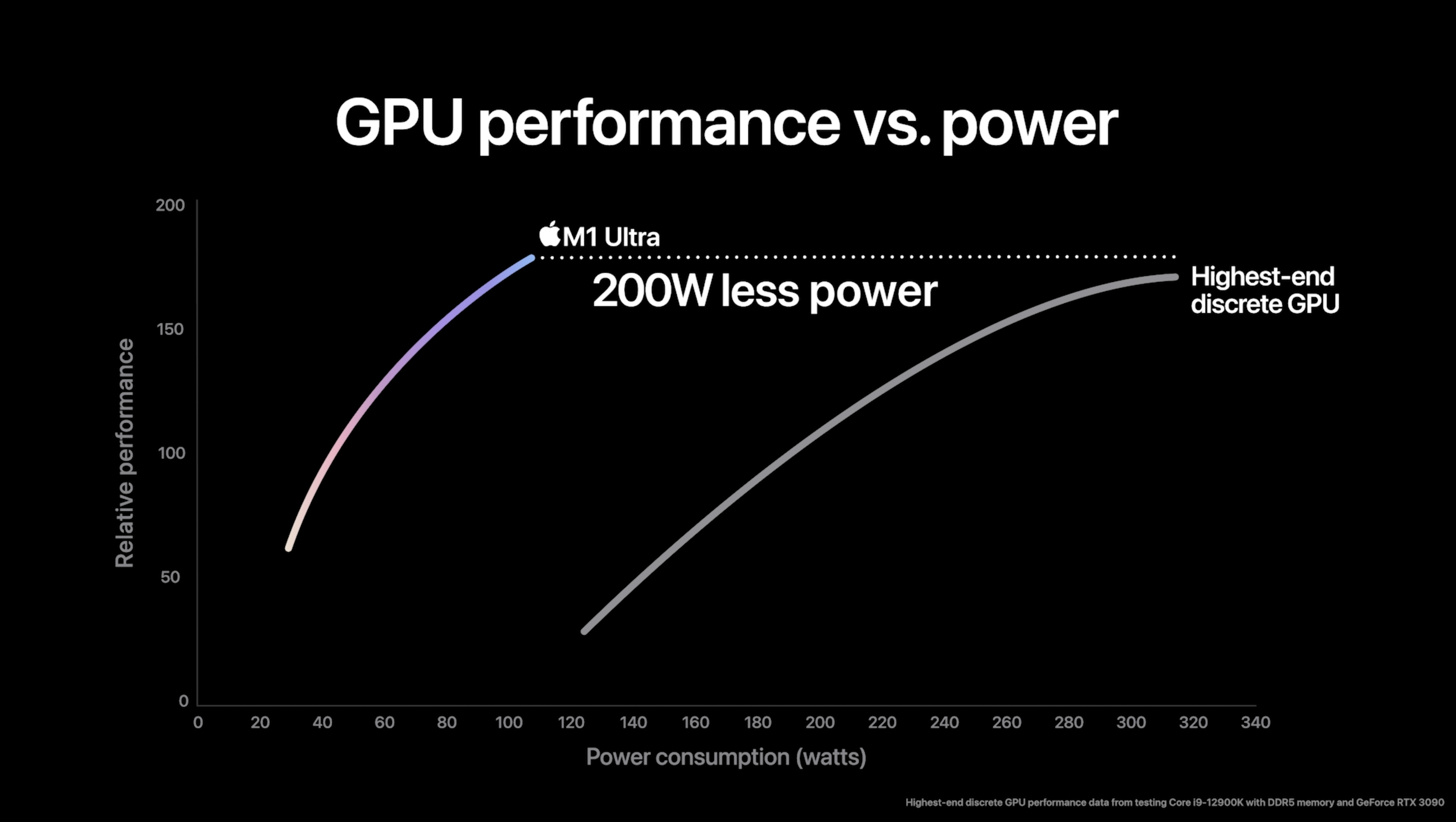Apple Mac Studio vs Mac Mini vs Mac Pro: What’s the difference?
The Apple Mac Studio has been unveiled, bridging the gap between the Mac mini and the Mac Pro. Though it looks like a mini, the Studio performs more like a Pro thanks to Apple’s latest piece of custom silicon: the M1 Ultra chip.
Apple’s newest desktop Mac is just a bit taller and heavier than the mini, but when configured with an M1 Ultra it ought to be faster and more power-efficient than some of the best computers on the market.
But of course, that begs the question: who is this for? The Mac Pro is clearly for professionals and businesses, while the Mac mini is aimed squarely at families and anyone who needs a small, cheap, efficient desktop Mac. The Mac Studio splits the line, delivering nearly Pro-like power in a small, elegant package.
Together we’ll go through all the most important differences between these Macs to give you a better sense of how Apple’s newest, coolest desktop stacks up against its siblings.
Apple Mac Studio vs Mac Pro vs Mac Mini: Specs
| Apple Mac Studio | Apple Mac Pro | Mac Mini | |
| Starting price | $1,999 | $5,999 | $699 |
| CPU | 10-core (M1 Max); 20-core (M1 Ultra) | 8-28 core Intel Xeon W | M1: 8-core CPU |
| GPU | 24-core (M1 Max); 48-core (M1 Ultra) | Up to 4 GPUs, AMD Radeon Pro W5500X – W6800X Duo | M1: 8-core GPU |
| RAM | 32-128 GB | 32 GB – 1.5TB | 8-16 GB |
| Storage | 512GB – 8 TB | 512GB – 8 TBs | 256GB – 2TB |
| Ports | 4x Thunderbolt 4/USB 4, 2x USB-A, HDMI, Ethernet, SDXC card reader, headphone jack + 2x USB-C (M1 Max) or 2x Thunderbolt 4 (M1 Ultra) | 2x USB-A, 4x Thunderbolt 3/USB-C, 2x 10Gb Ethernet ports, headphone jack | 2x Thunderbolt 3/USB4, 2x USB-A, HDMI, Ethernet, headphone jack |
| Dimensions | 7.7 x 7.7 x 3.7 inches | 20.8 x 17.7 x 8.58 inches (21.9 inches tall w/ wheels) | 7.7 x 7.7 x 1.4 inches |
| Weight | 5.9 pounds (M1 Max), 7.9 pounds (M1 Ultra) | 38.8 pounds (rack), 39.7 pounds (tower) | 2.6 pounds |
Apple Mac Studio vs Mac Pro vs Mac Mini: Design
Apple’s Mac Studio is the new midpoint among these machines, price-wise, but you can’t say the same thing about its size. Instead, a colleague aptly described it as “a Mac mini that’s been doing stretching exercises.”
That’s because the Mac Studio has the same 7.7 x 7.7-inch base as the Mac mini, but it’s roughly two inches taller: 3.7 inches vs the 1.4-inch height of the mini. However, the mini is positively light with its 2.6-pound weight, whereas the Mac Studio is quite a bit heavier: the M1 Max model weighs 5.9 pounds, and the M1 Ultra model is a hefty 7.9 pounds, due in part to the extra weight of the material Apple uses to cool the more powerful chip.
Weight notwithstanding, both are remarkably small and easy to fit into an existing workstation or desk setup, which adds to their charm.

The Apple Mac Pro towers over both, measuring 20.8 x 17.7 x 8.58 inches (21.9 inches tall w/ wheels) and weighing roughly 39.7 pounds when configured as a desktop tower. You can also configure one in a slightly more compact chassis for rack mounting, but that’s typically the domain of businesses and creative pros, not the average Mac owner.

The Mac Pro feels outdated in this respect, as the small size of the Mac Studio and Mac mini make them seem like elegant, cutting-edge PCs designed to slip into your life with minimal fuss. The Mac Pro, by comparison, looks and feels like a workhorse desktop. That’s exactly what it is, to be fair, and it excels at demanding workloads if you configure it appropriately, but most of us will never have cause to invest in a Mac desktop with a $6,000 starting price.
If you do, you’ll get the benefit of the most powerful Mac you can buy (if you’re willing to trick it out) with a remarkably well-designed case that makes it easy to open up and swap components out.
Apple Mac Studio vs Mac Pro vs Mac Mini: Ports
All of Apple’s Macs offer decent port selections that include all the most important options: Thunderbolt/USB-C, USB-A, HDMI out, Ethernet, and headphone jacks.

However, the bigger your Mac, the more ports you’ll enjoy. The Mac Studio offers a few more USB-C/Thunderbolt 4 ports than the Mac mini — though the extra ports you get depend on whether you order the Studio with an M1 Max or M1 Ultra chip. The M1 Max version sports two USB-C ports on the front, while the M1 Ultra Studio has a pair of Thunderbolt 4/USB-C ports instead.

The Mac Pro is no slouch in the ports department, but given its advancing age it can’t quite match the speed and options on offer with the Mac Studio and Mini. Most notably, if you buy a new Mac Pro you’re limited to outdated Thunderbolt 3/USB 3 ports, which are effective but can’t match the speed, power delivery or features of Thunderbolt 4/USB 4.
This can also hamper you when trying to use multiple displays, though the real bottleneck for multiple displays on a Mac Pro is what video card (and how many) you put in it. With the right GPU(s), even an aging Mac Pro can kick out video to up to a 6K display (like Apple’s $5,000 Pro Display XDR) or up to eight 4K displays.
The Mac mini, by comparison, can support up to two external displays via Thunderbolt and HDMI (up to 6K/4K), whereas the newer Mac Studio can support up to five (4 up to 6K/1 up to 4K).
Apple Mac Studio vs Mac Pro vs Mac Mini: Performance
While the Mac Pro is still the best answer for anyone who wants a Mac desktop with the most raw power and configurability options, the addition of Apple silicon gives the diminutive Studio and mini Macs enough muscle to compete with some of the best computers on the market.
We won’t know for sure how well the Apple Mac Studio with one of those new M1 Ultra chips performs until we have a chance to test one out for ourselves, but based on the announced specs it’s almost certainly more performant than any Mac save the most tricked-out Mac Pro.
The first Apple M1 Ultra benchmarks show off awesome power that rivals the speed of premium CPUs like AMD’s Threadripper 3990X, further reinforcing our belief that the Ultra’s 20-core CPU and 64-core GPU deliver outstanding performance. Apple certainly thinks so, as the company claims the M1 Ultra can outperform the highest-end discrete GPUs (like the Nvidia GeForce RTX 3090) while using up to 200W less power. And while power draw is less of a concern on a desktop than a MacBook since you don’t need to worry about draining a battery, the extra efficiency is good for the planet — and your wallet.

The Mac Pro, by comparison, is the performance machine for Mac enthusiasts with deep pockets. With up to a 28-core Intel Xeon CPU, up to two Radeon Pro W6800X Duo linked GPUs (for a total of four graphics cards), up to 8 GB of SSD space and up to 1.5 terabytes of RAM, the Pro can be kitted out for unbelievable speed. However, this beast is beyond the reach of all but the most pro users, as the aforementioned config with all those beefy components would cost you about $49,799 — and that’s before you consider paying extra for an Apple Afterburner PCIe accelerator card ($2,000, to further speed up video editing) or a set of wheels for your Pro ($400).

The Mac mini is the cheapest and weakest of the three Macs, but that doesn’t mean it’s a bad computer. On the contrary, the M1 chip gives this little aluminum puck more than enough power for working, watching videos, and even some light gaming (think Minecraft or Sid Meier’s Civilization, not Cyberpunk 2077). In our performance testing the mini with M1 earned roughly the same scores as the 2020 MacBook Air and MacBook Pro, which makes sense since both are also powered by M1.
That’s decent performance for a computer that starts at $699, though it does relegate the mini to the back of the pack when we compare it against the performance of its bigger siblings. The Mac mini is more than good enough for most people, effectively competing against PCs with Intel Core i3 and i5 chips, but folks who prize performance will be better-served by the Mac Studio.
But will the performance and storage boost be worth the roughly $1,200 price bump from Mac mini to Mac Studio? Only you can say for sure, but we’ll have a better idea of how much of a difference it makes once we finish putting the Studio through our in-house performance tests.
Apple Mac Studio vs Mac Pro vs Mac Mini: Outlook
As you can see, the new Mac Studio appears poised to redefine what an M1-powered Mac desktop is capable of doing.
The M1 Max chip it ships with by default was already one of the beefiest chips we’ve yet seen, delivering impressive performance in the MacBook Pro 2021. If you configure a Studio with a new M1 Ultra it should be more than powerful enough to handle all but the most demanding tasks, up to and including video editing and some decent gaming.
Of course, at that point you’ll be paying upwards of $4,000, an echelon of affordability occupied by some of the best gaming PCs on the market. And if having access to the most games possible matters to you, you might be better off with one of those machines, as many PC games aren’t optimized for Apple silicon.
But if you just want an incredibly fast and capable Mac, the Studio looks like a significant upgrade over the mini. Even with the M1 Ultra it may not be able to outperform the top-of-the-line Mac Pro, but you should be able to get close for a fraction of the price.
That said, don’t forget about the Mac mini. It’s a great little Mac for not a ton of money, and rumors persist of a Mac mini 2022 upgraded with Apple silicon coming later this year.
For all the latest Technology News Click Here
For the latest news and updates, follow us on Google News.
